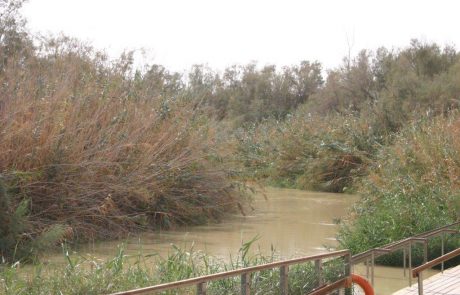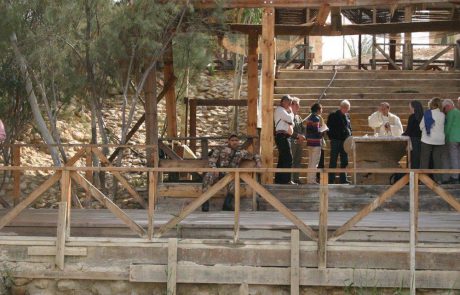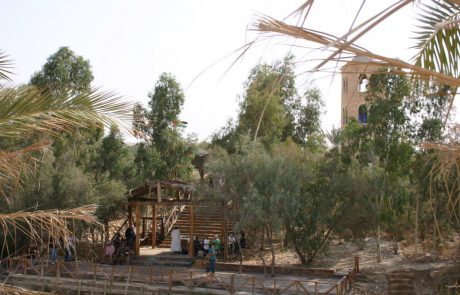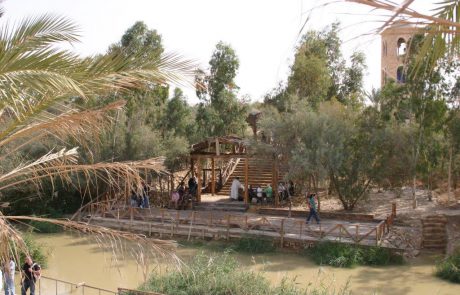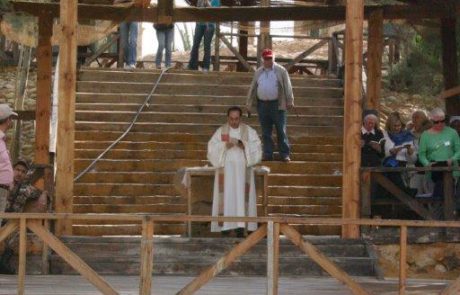Trips around the Dead Sea and Judean Desert
Qasr El Yahud
Qasr El Yahud is on the west bank of the Jordan River, about 10 Km east of Jericho, covering an area of 81 acres owned by the Christian Churches.
The site is considered holy for Christians and Jews and is traditionally related to three major events:
- Jordan crossing – Various traditions note Qasr el Yahud as the place where the Israelites crossed the Jordan River into Canaan after 40 years in the desert – “The priests who carried the ark of the covenant of the Lord stopped in the middle of the Jordan and stood on dry ground, while all Israel passed by until the whole nation had completed the crossing on dry ground” (Joshua 3:17), “…the waters of the Jordan shall be cut off from the waters that flow down from above; and they shall stand in a heap” (Joshua 3:13).
- Prophet Elijah and Elisha – It is here that Elijah parted from Elisha and ascended to heaven on a chariot of fire “Now Elijah took his mantle, rolled it up, and struck the water; and it was divided this way and that, so that the two of them crossed over on dry ground.” (2 Kings 2:8).
- Jesus’ baptism – According to Christian tradition, Jesus was baptized by John the Baptist. In the New Testament, this event marks the spiritual birth of Jesus and his growth as a spiritual leader. It is considered the third most sacred site for Christians, following the Church of the Nativity in Bethlehem and the Church of the Holy Sepulcher in Jerusalem.
Monasteries and churches were built by the holy site in the Byzantine Age, alongside inns that provided the crusaders with accommodations and protection against the Muslim rulers. Baptism was later reduced at the Byzantine church and the Turkish rule was more tolerant toward the crusaders. As a result, the monasteries and inns were gradually deserted. The site was revived during the British Mandate, with new monasteries whose remnants are evident to this day.
In 1967, the site operated under Jordanian rule and was a vibrant and active center with many tourists. The site was closed to visitors after the Six-Day War and declared a closed military area. Mines were laid around the site and it is still closed to visitors, while restoration efforts have been recently conducted in some of the areas.
In the 1980’s, following a request from the Greek Patriarchy to the Regional Administration in Judea and Samaria, baptism ceremonies were renewed at the site. The Orthodox Church was then followed by others and there are now many churches in the area, including the Coptic Church, Franciscan Church, Assyrian Church, Romanian Church, Russian Church and Ethiopian Church.
The site was reopened for visitors in August 2011 after investing large sums of money and clearing some of the minefields. The site is now open to all, requiring no prior reservations and no admission fee.
Mines are currently being cleared from the monasteries surrounding the site, aiming to open them up to visitors as well.
Tour duration
1 hour
Difficulty
Easy
Admission fee?
No
Location
~10 Km north of the Dead Sea. Coming from Rte. 90 (Jericho bypass), turn east according to the signs ~1.5 Km until you reach the military security fence.






